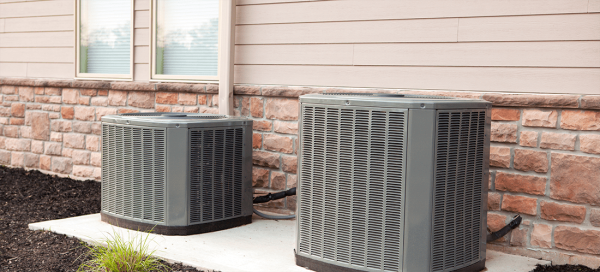Winter storms can quickly become a danger if you aren’t prepared – yes, even in Texas. Understanding what to do before, during and after a winter storm is the best way to ensure the safety of your household and property.
Winter Storms in Texas
The Lone Star State isn’t usually associated with winter storms, but they do happen - and the effects can be devastating. While blizzards aren’t normally an issue, freezing temperatures can lead to power outages, icy roads, non-drinkable tap water, and more problems. And since harsh winter conditions aren’t very common in Texas, many residents aren’t prepared for when they do arrive, making them even more dangerous. Staying on top of winter storm prep means you won’t be surprised if an unexpected storm arrives, bringing with it freezing rain, extreme cold, and other treacherous conditions.
What To Do Before a Winter Storm
Making sure you’ve got everything you need will reduce the stress and anxiety a winter storm can bring. Here are a few things to do before a winter storm arrives.
Prepare for Power Outages
Use our FAQ to sign up for alerts from your utility provider, view outage map, or contact them in case of an outage.
Power outages are quite common during intense winter storms, so your winter weather prep should include a plan on how to deal with them. Luckily, you can prepare before they happen to mitigate any negative effects. If possible, invest in a backup generator and spare fuel. Here are some more ideas for preparing for a power outage during the winter season:
Have several flashlights and batteries ready. LED camp lanterns are also a good option you can set up in bathrooms or hallways.
Candles are another good lighting option; however, using fire inside the home always carry some risk, so use candles with caution, and make sure everyone knows where the fire extinguishers are and how to use them.
Have a way to stay warm without power. A backup generator can run electric heaters, and an extra pile of warm blankets will always come in handy during a winter storm.
Having solar panels installed at home could also be helpful for maintaining power. Talk to Work and School
If a winter storm is expected soon, it’s a good idea to talk to your employer and your children’s school to see what they plan to do in the event of an emergency. Here are some questions you may want to ask the school and/or teachers in the event of severe winter conditions.
Will the school close and release students early if a storm is coming, or will they hold students at the school?
What kind of emergency solutions does the school employ to protect against power outages and freezing temperatures?
What are students responsible for while out of school during a storm, and what kind of “makeup work” will be required when they return?
In the event of the school closing during a storm, will there be makeup days later in the year? If so, when?
How will the school contact parents in the event of closing, lockdowns, or reopening?
If you work, you should also reach out to your employer to discuss what happens if a winter storm should affect the office:
What is the policy for days missed due to severe winter storm conditions?
Is there a work-from-home option during inclement weather?
How will emergency plans be communicated to employees?
Stock the Pantry
If you are aware that a winter storm is headed your way, make sure that you have a well-stocked pantry. Because severe winter weather can bring power outages, stick to foods that don’t need to be refrigerated or cooked at high temperatures. For example, you can easily heat canned soup or vegetables over a small camp stove. It can sometimes take days to get power back, so make sure you have enough food for everyone in the household as you prepare for a winter storm.
When you’re stocking your pantry, don’t forget to include drinking water. Try to have at least a gallon a day for three days for each person. For instance, a family of four would need twelve gallons of water for a three-day supply.
Gather Tools
If you know you’ll be leaving your home to go to work or school in the midst of severe winter weather, you’ll want to make your exit as easy as possible, so gather your tools and keep them handy. This may include things like rock salt to melt snow, scrapers for de-icing walkways or shovels for getting rid of snow.
Make an Emergency Kit
Maybe you don’t have enough time to shop for essentials before a storm arrives. That’s why it’s always a good idea to have an emergency storm kit prepared. It might include a first aid kit, flashlights, a radio, batteries, high-calories snacks, and water. If you have a baby, the kit would also include formula, diapers, etc. This kit will be specifically for your household, so make sure it contains the bare essentials for three days for everyone, including pets.
Seal and Insulate
One easy thing to do to prepare for winter weather is to seal and insulate. Check all doors and windows for drafts and use high-quality sealing tape or weatherstripping to seal them up. This will prevent cold air from entering the home in the first place. However, if you’ve lost power and heating, insulation can keep the warm air in. Hanging spare blankets over windows and doors is a good way to insulate quickly.
Get Your Medicine
If you or anyone in your household takes a prescription medication, get it refilled before the storm arrives. Waiting until during the storm for a prescription refill means dealing with icy roads, extra traffic, and a possibly closed pharmacy. Talk with your doctor or pharmacist about making sure you have access to your medication when you need it.
Prepare Your Car
Fall is a great time to prepare your vehicle to weather upcoming winter storms. Here’s what to do before the temperature drops:
Change out your standard windshield wiper fluid with a low-temperature version.
Check your tires for sufficient tread and pressure. If needed, get new tires and fill all tires to the recommended pressure. Check your owner’s manual for the precise psi.
Don’t let your gas tank run low. Try to keep your tank nearly full to prevent ice forming in the tank or fuel line.
Check the antifreeze level in the radiator and refill if needed.
Take your car to a professional for a pre-winter checkup. If you’re not confident with a DIY approach, your mechanic can make sure the brakes, emergency flashers, battery, heater, and defroster are all in working condition.
Protect Your Landscape
As a subtropical climate, some of Texas’ beautiful warm-weather landscaping isn't meant for freezing rain and sleet. So, when winter storms do visit, it’s important to keep plants protected. Add a thick layer of mulch to plant beds and wrap plants in garden blankets to protect against freezing. If you have unique ornamentals or fruiting plants, have a talk with your lawn and garden specialist to see how to protect them during a winter storm.
What To Do During a Winter Storm
Once a winter storm has arrived, you’ll be relying on your preparations to get you and the rest of your household through it smoothly. Here’s what to do during the storm.
Stay Inside
Unless you absolutely must leave your home for work, school, or other necessities, stay inside. Conserving heat within the home is crucial, especially if the power goes out. Not only will opening the door to go in and out let heat escape from your home, but going out into the cold will make it more difficult to warm up when you go inside.
Stay Warm
During a severe winter weather conditions, the goal is to stay fed, watered, and warm. As long as you have a full pantry or emergency kit and plenty of water, you just need to stay protected against extreme cold. Here are some tips:
If you still have power, set your thermostat at a constant temperature night and day to prevent frozen pipes. An affordable electricity plan will make staying warm easier.
Use your alternate heat source. Make sure you operate it safely and have taken precautions against carbon monoxide poisonings.
Dress in layers of warm clothing. Use tights, leggings, or long underwear as your base layer, then add layers as needed. Keep feet, hands, and head warm, too.
Use more blankets. If possible, use combined body heat to stay warmer for longer by sharing a blanket.
Unplug Electronics
Power surges can damage sensitive electronics. If the electricity goes out, unplug electronics and appliances to protect them when the power comes back on. You can leave a lamp or light on in one room so you know when power is back on.
Monitor Health
The health risks associated with cold weather and winter storms include frostbite and hypothermia. These conditions can be serious, so if you see signs, take action immediately. Here’s what to know about frostbite:
Frostbite is when the skin and tissue freeze.
It mainly affects fingers, toes, earlobes, and nose.
Symptoms include paleness of the affected area, swelling, burning, itching, and pain upon rewarming.
*If you notice signs of frostbite, gently cover the affected area to protect it from further cold damage and seek medical help.
Here’s what to know about hypothermia:
Hypothermia is when the overall temperature of the body drops dramatically.
Symptoms include disorientation, memory loss, slurred speech, fatigue, and uncontrollable shivering.
If you see signs of hypothermia, take the person’s temperature; if it is below 95 degrees Fahrenheit, call for medical help. If the person is wearing wet clothing, remove them and keep the person warm by putting on dry clothes or wrapping them in warm blankets. If they are able to drink, a hot beverage will help raise their internal temperature.
Conserve Fuel
Weather emergencies can be unpredictable, so conserve fuel as much as possible. Only use the generator if absolutely necessary and make sure that flashlights aren’t left on or candles left burning in unattended rooms. If you’re unsure how long a power outage will probably last, rationing fuel will help.
Turn on the Taps
To prevent pipes from freezing and bursting, turn all taps on to a slow but steady drip. The flow through the pipes, however slow, will keep the water inside from freezing over and will save you some costly repairs. Monitor the temperature; if it is expected to drop below 28 degrees for a few hours, that’s a sign to turn on your taps.
What To Do After a Winter Storm
Once the storm has passed and the weather has more or less returned to normal, take some time to go through some after-storm actions.
Talk with Your Insurance Provider
If your home sustained any damage from wind, fallen trees, hail, or anything else storm-related, talk with your home insurance provider to get claims underway. Take detailed photographs of all damage.
Monitor the Weather
Winter weather can be erratic, so keep your eye on the weather, even after the storm has ended. Another storm in quick succession could be difficult to deal with if you haven’t yet recovered from the last one, so don’t be caught unawares.
Update Friends and Family
Following a winter storm, it’s a good idea to update friends and family about your condition and location, if they have changed at all during the storm. Keeping an open line of communication after a storm will help reduce stress and anxiety, especially for those that live out of state or aren’t affected by the storm. A quick call for an update will give them - and you - peace of mind.
Prepare for the Next Winter Storm
Now that you’ve successfully gotten through a winter storm, it’s time to prepare for the next one, and that means replenishing your supplies.
Restock the emergency kit as needed, including first aid kit materials, hygiene products, food, etc.
Check all flashlights and restock your batter supply if needed.
Launder blankets and winter clothing so they’re ready when needed again.
Clean, repair, or replace tools like scrapers or shovels as needed.
Facing a winter storm may be daunting, but as long as you’ve prepared for winter properly, you should be fine. By following the above tips on what to do before, during, and after a winter storm, you’ll be ready to take on whatever the storm has for you.




